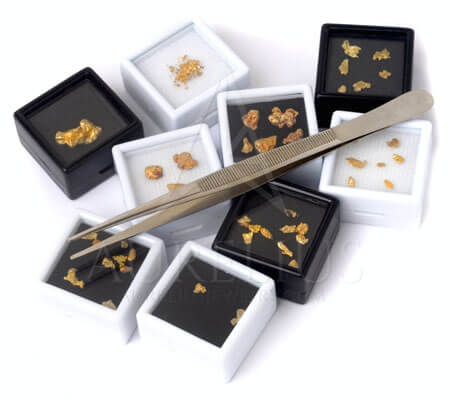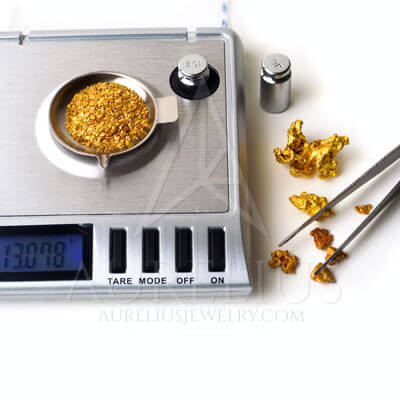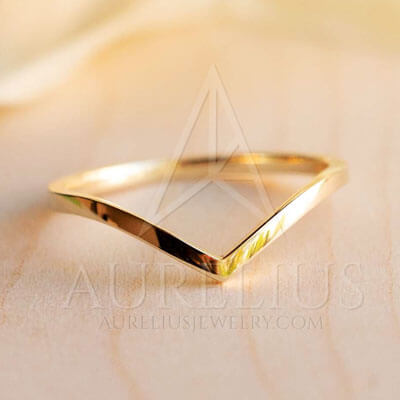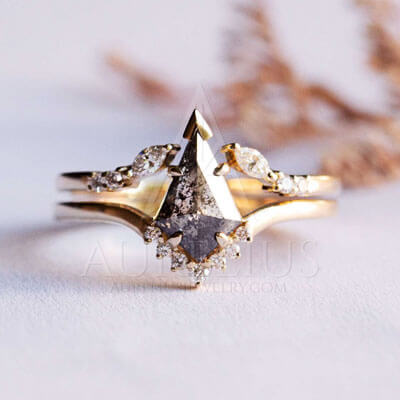Gold and diamond have been associated with the best sought-after jewelry for a very long time. It is part and parcel of any fashion. But you don’t know which gold quality and category are the best for you. In this article, we dive into the quality of the gold jewelry that varies with the karats. One of the most common questions is 14k vs 18k gold. So we also talk about why each tier of gold is better than the other. We also discuss what you need to consider when buying gold for yourself.

Purity of Gold
You need to consider different ratings to understand the purity of gold and its jewelry. You can use these ratings to classify the quality of the gold and the price. Following is a gold karat scale that can help you understand what purity of gold means.
- 24K – 99.9% purity (Fineness 999)
- 22K – 91.6% purity (Fineness 916)
- 20K – 83.33% purity (Fineness 834)
- 18K – 75% purity (Fineness 750)
- 14K – 58.33% purity (Fineness 583.3)
- 12K – 50% purity (Fineness 500)
- 10K – 41.67% purity (Fineness 417)
Measuring the gold karat is an important factor for choosing the quality. Karats determines the price of the jewelry in general. Thus, karat is the fineness or purity of the gold jewelry, and in simple terms, a single karat is 1/24 or 4.17% of gold. At the same time, the other material is an alloy or some other material. A 24k gold is pure. This other material you can mix into gold to make the final product harder. This mix doesn’t make the gold diluted if that’s what most think.
Misconception between Karat and Carat
You should not confuse the karat of gold with the carat of diamonds. These are different measuring parameters altogether. The purity of the gold you can measure in karats, while the weight of diamonds is measured in carats. Not confusing at all, right?
24k Gold – Purest of All?
24k is the highest amount of gold purity you can get. But is it the best option? Yes, when investing, but not when buying an everyday jewelry item. Why? Let’s explain.
- The term “Pure Gold” always has a nice ring to it. 24k is the most sought-after purity, not just for bragging rights but also due to the color’s look.
- 24k is a dense metal but also very brittle.
- It is easy to work with as the purest of gold is quite malleable. Artisans prefer this quality of gold because it makes it easier to work it in intricate shape.
- This malleability is also its biggest weakness as it can scratch easily. It also bends or warps.
- You need some alloy to hold the shape and give it strength.
- Pure gold is so bright that it’s almost orange. What most users consider gold is actually an alloy. You mix alloys with gold to give the gold jewelry its color.
- It’s quite expensive, and that’s why many jewelers mix it with alloy to reduce the cost. The cost jump from 14k to 24k is twice the price, which is huge.
- If taken well cared for, 24k gold is a great investment. It has one of the best resale values of any metal. Keeping a simple brick for future sales is guaranteed enough to profit.
Comparing 14k vs 18k Gold
18k is the nearest purity to 24k gold, making 75% gold, and the rest is an alloy. This alloy can be a combination of different metals. It is the most common purity used in making gold jewelry. 18k gold has bright yellow shine and color, mostly used in rings, necklaces, and other pieces. This popularity is primarily due to its balanced purity.
Following are some great advantages of buying 18k gold:
- Compared with 24k, 18k gold is the best option for practicality. It is the nearest to purity but much stronger than 24k, and that’s why used or preferred by most users.
- There is little possibility of allergic reaction to metals as only 25% of different metals are in a mix. So, the reactive metal can be much less.
- Perfect choice for wedding and engagement rings due to its bright yellow shine. Most users prefer this bright shine and gold hue.
Even though 18k gold is one of the most sought-after types, it is not completely devoid of disadvantages. Some important disadvantages for 18k gold are as follows:
- Though not as prone to scratches and warping as 24k gold, it still tends to get them.
- Quite expensive, even if it isn’t as pure as 24k gold, so not a good option for those who are on a budget.
14k vs 18k Gold – Halfway Through:

Having purity of just about 50% makes it the choice of most buyers because the glass is half full. 14k is easier for budget buyers and accessible to most people. So much so that 90% of wedding rings and jewelry bought in the USA is 14k gold.
Most of the time, 14k gold retains its original shine even after mixing with other metals. Like other purities of gold, the following are the advantages of 14k:
- The strongest of the 3 we are discussing and cheaper, making it an ideal choice for most.
- The shine and color are not the same as 18k or even 24k. Still, the shine is enough to make it a great gold jewelry piece.
And when talking about disadvantages:
- 14k gold is still quite expensive compared to 10k, so ultra-budget buyers steer clear.
- Higher concentrations of other metals make the jewelry prone to cause allergies.
10k – The Budgeter’s Paradise
10k is the least pure type of gold preferred in the US and other countries. It is also one of the lowest purity golds that suppliers market in most countries as gold. Though used as earrings, less so common for engagement and wedding rings. Higher-end pieces are also less likely made of 10k gold as they are making a statement, after all.
10k gold is the lowest quality gold but good on your wallet. The low cost makes it the top choice for most consumers. Finally, it provides one of the sturdiest jewelry for gold accessories.
The 10k gold ornaments and accessories lose their color with time, making it the subtler of the golds. This color loss is due to alloy mixing—the higher content of other metals skin irritation to some.
1k – The Lowest of the Low
Though highly unlikely, many jewelry pieces that boast 1k gold is available. We do not recommend such for any of your jewelry. The cost is just not acceptable. You can find many more options that look and feel better without the 1k branding.
Should you choose 14k vs 18k gold?
Gold has 3 types of colors available to you depending on the metal mixing, other than the karats. These are yellow, white, and rose gold. The most common alloys mixed with gold are copper, palladium, nickel, and zinc. These metals help define the colors of different gold types.
Below we discuss four ways alloy mixing can affect the outcome of gold.
Coloration
The pure gold color is uncommon in 24k or 18k jewelry because of the purity of gold. But in the case of 14 and 10k, the alloy metal can change the coloration of the gold jewelry piece. For example, mixing platinum or palladium changes the coloration towards the silvery touch. This hue is known as white gold. But, mixed copper will give your jewelry a rosy touch. The rosy touched gold is commonly known as rose gold.
Most people prefer gold’s bright yellowy and shiny outlook. Not the case with most enthusiasts who will prefer more romantic colors. These romantic colors in the shape of white and rose gold enhances their beauty if it matches their skin.
Strength and Durability
We know some metals help in giving gold its different colors. Other than coloration, different metals give a gold jewelry piece different strengths. Platinum is one of the strongest metals and one of the best choices in jewelry. This choice is mainly due to their strength attributes added to gold jewelry. These mixed gold pieces are sturdier compared to purer gold types.
Skin Sensitivity
Nickel is one of the most irritable metals when it comes to mixing. Around 20% of people who use gold mixed with nickel experience allergic reactions. It is quite like zinc mixed gold. But platinum is the least bothersome metal. Be aware of this fact whenever buying jewelry.
Price
Eventually, one of the most important aspects of buying gold jewelry. More expensive jewelry has rarer metals mixed in gold. Palladium, platinum, and silver are more expensive and can drive up your jewelry price. Copper, nickel, and zinc are cheaper, making gold mixed with the cheaper and easy on your wallet.
Which Gold Purity Should You Choose?
It is no shame to start with the best price when buying jewelry. Your choice of a great jewelry piece depends on the following priorities.
Color and Appearance of Gold Piece
First, the design and then the color/appearance of the jewelry attract you. Attraction is relative and varies greatly from consumer to consumer. The attraction depends on personal preferences relying on your skin tone and attire. For example, people who prefer a classic look prefer bright yellow gold jewelry. Similarly, darker skin toned people also prefer them. The competing 14k vs 18k gold are the top options for this category of people.
You may need to look for lower-quality gold jewelry if you prefer white gold with a silvery appearance. You can use metals that enhance this color can be mixed with your gold.
Feeling and Irritation
Gold’s touch and how you feel wearing a specific piece of gold ring or necklace are very important. Some might feel the amount of irritation with certain metals is also an important aspect. Some people can’t wear a particular type of gold because of their allergies. So higher purity gold has lesser issues. In other words, lower-quality gold might have more irritation.
Long-Lasting
Most gold is strong and long-lasting. But if not cared for, they might fade over time. The choice eventually rests with you, depending on your skin and choices.
Best type of gold for Engagement Rings

- First, decide your budget.
- Decide on the color of the ring centerpiece and the housing metal.
- Next, choose the color of gold for your ring
- Finally, choose the diamond and lock it in.
Conclusion
The first question you should be asking yourself is, what is your motivation for buying gold? If it is for making a statement, buy the highest and purest quality of gold. If you are on a tight budget, go for lower karat gold. If you like traditional gold pieces, go for 18k or above karats for the pure gold color. If you like a change in the monotony, choose a mixed gold piece of a different color. You can always add a gold piece later into your profile by mixing and stacking. Finally, if you are tight on budget and want the next best thing, go for 14k gold accessories.
